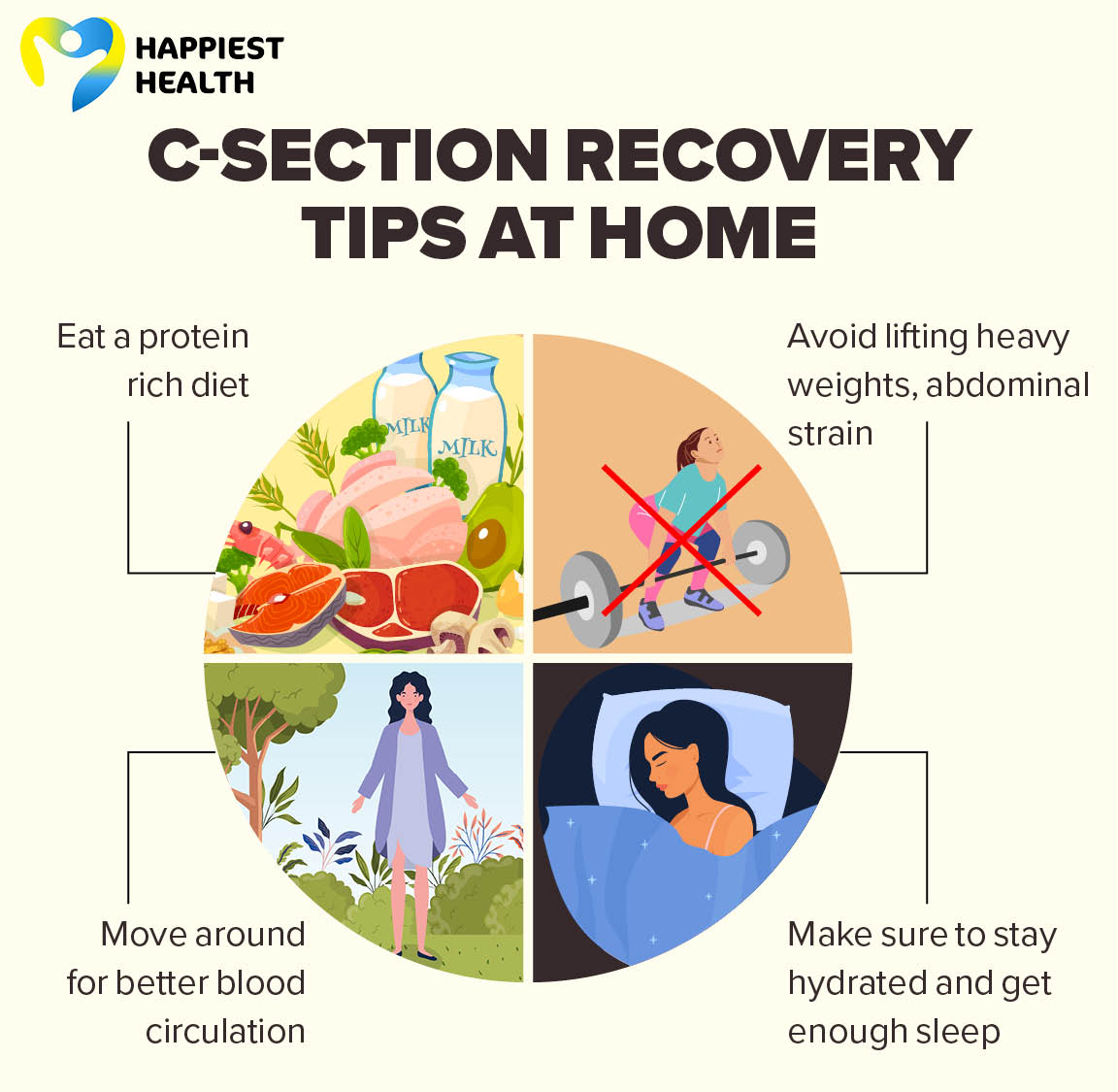
Meghali Pathak, a 41-year-old homemaker from Guwahati, has had two successful cesarean section surgeries without any major hindrances. She had complete C-section recovery by taking the utmost rest and ensuring that she did not perform any strenuous exercise that put pressure on her abdomen, as suggested by her doctors. She underwent a change of dressing for the surgical incision and applied ointment to avoid an infected C-section scar.
She could not bathe for twelve days, until the wound healed. “During my second pregnancy, I gained weight and took more time to recover. I was prescribed painkillers for the surgical pain. However, my C-section recovery took almost a month in both cases,” shares Pathak.
Cesarean section surgery is performed by making an incision in the abdomen and uterus to deliver a baby. After a C-section, new mothers often experience pain, discomfort and difficulty moving around. At times, it can also lead to postoperative complications like urine infection and an infected C-section scar. The C-section recovery typically takes several weeks, and it is crucial to prioritise self-care, rest and proper nutrition.
Complications after cesarean section surgery
On a call with Happiest Health, Dr Pratima Thamake, gynaecologist at Motherhood Hospitals, Mumbai, lists out some complications that might occur post C-section surgery:
- Infection of C-section incision
- Endometriosis
- Urinary tract infections
- Dehydration
Post-operative pain can leave a new mother immobilised and at bedrest for a longer time. “It can lead to blood clot formation in legs. It can also disrupt the bond building between the mother and baby during breastfeeding,” explains Dr Thamake.
She further adds that the risk of complications is higher in people with:
- Obesity
- Low hemoglobin
- Low immunity
- Long duration of labour
How to prevent an infected C-section scar
“If the incision scar on the abdomen forms a white line with no oozing pus it is healthy,” says Dr Ruchi Bhandari, consultant gynaecologist at Mishka IVF Centre, Jaipur.
The incisions must be covered with a clean and dry bandage to avoid infection and ensure better C-section recovery.
One may experience sharp pain in the incision site along with fever and shivering, if infected. “Further, the risk of getting an infected C-section scar is higher if you are on steroids or antibiotics,” she adds.
“Keep the incision site dry. Bandage should be changed after three days of the procedure to check for an infected C-section scar,” explains Dr Bhandari.
Dr Thamake says the incision made on the uterus takes about eight weeks to heal. “Take utmost rest and avoid any strenuous exercise that strains abdominal muscles for about two months,” she says.
Diet for C-section recovery
Many misconceptions regarding the diet for C-section recovery like avoiding solid foods hinders healing.
“A new mother’s diet should be balanced, nutritious and protein rich. Also, it need not be totally bland. But ensure it is not spicy,” advises Dr Thamake. She further adds that water intake should be high to avoid dehydration. Good sleep is vital for C-section recovery.
Managing C-section afterpain
Cesarean section surgery is characterised by afterpain (contractions after childbirth).
“Painkillers are generally prescribed post-surgery. People with a low pain threshold can take stronger medications after consulting a doctor. The anti-inflammatory properties of painkillers prevent an infected C-section scar,” says Dr Bhandari.
Overcoming postpartum blues for C-section recovery
Postpartum depression is common among new mothers. “One may experience detachment from the child. It is important to talk to friends, relatives or your partner about how you are feeling,” says Dr Bhandari, “Mothers require family support.”
She says that postpartum blues usually goes away in two weeks. If not, then it is crucial to consult a mental health specialist.
Other C-section recovery tips
A new mother is usually able to get out of bed two days after C-section. “One should practise passing urine on their own without the help of a urinary catheter to avoid contracting urinary tract infection post-surgery,” explains Dr Bhandari.
Excessive bowel movement and increased urine production are due to hormonal changes and uterine contractions post-delivery. “There can be issues like constipation, diarrhea, fecal incontinence and hemorrhoids (pain and discomfort while passing stools due to swollen veins near the anus). This can be treated using stool softeners, laxatives, pelvic therapy and usually heals in a week or two,” says Dr Bhandari.
“A new mother needs to be vigilant. Beware of signs that require immediate medical attention like excessive vaginal bleeding or foul-smelling discharge,” says Dr Thamake.
Do not hesitate to approach your doctor if something is concerning you.

Takeaways
- Cesarean section surgery or C-section surgery is a major surgical procedure. New mothers may experience post-surgery complications like urinary tract infections and infection of the incision scars.
- C-section surgery can also cause postpartum blues. It is important to share your feelings with your close ones or consult a mental health specialist.
- Having a protein rich diet, staying hydrated, avoiding strenuous activities and good sleep are some of the ways for a successful C-section recovery.
















